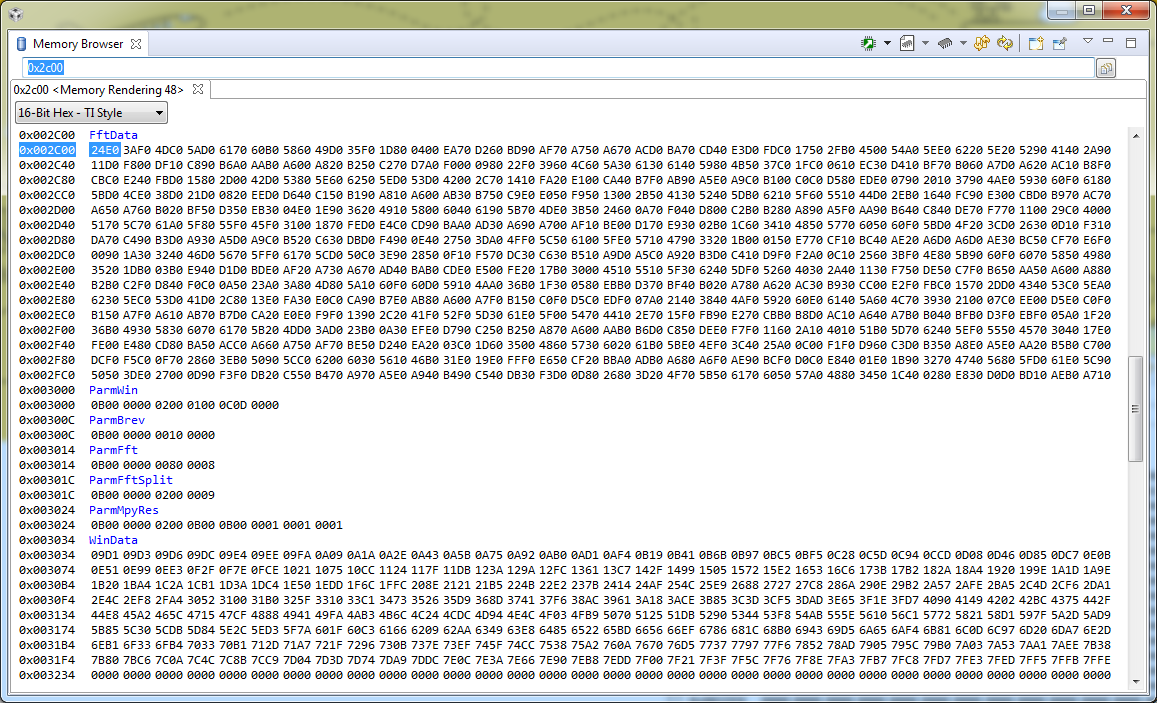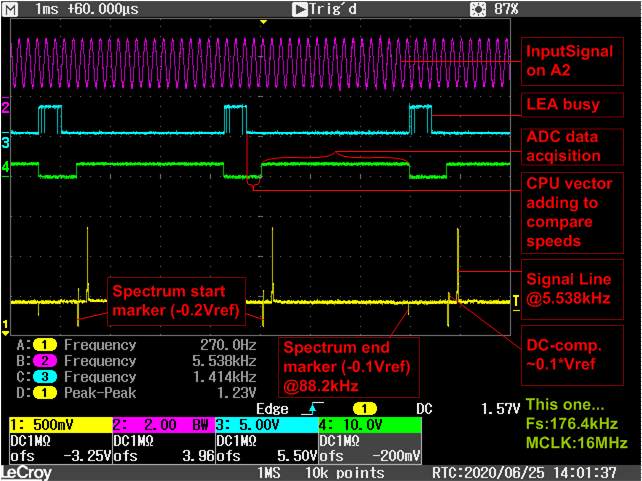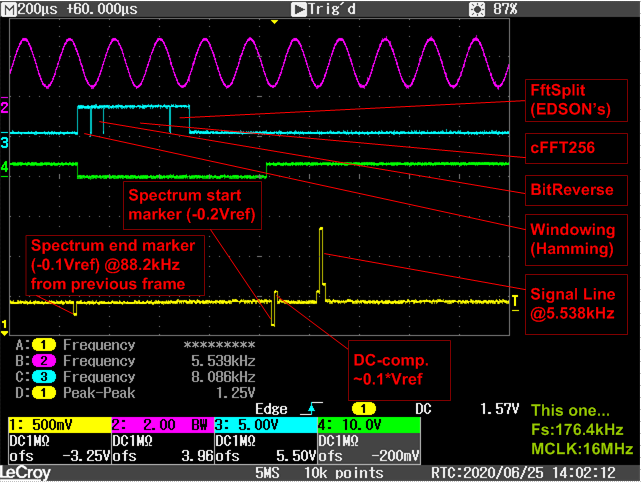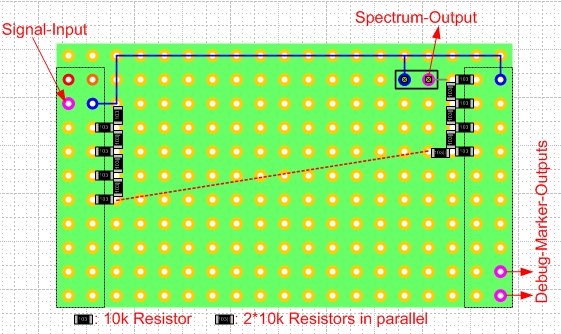Other Parts Discussed in Thread: TIDM-FILTERING-SIGNALPROCESSING, MSP-EXP430FR5994
Hi,
We are testing FFT with LEA with the sample codes from the TI design
"TIDM-FILTERING-SIGNALPROCESSING"
This sample code is designed for "256-point complex FFT" but we need 512-point.
In this sample code define LEARAM
struct FftData_s
{
_q15 input[VECTOR_SIZE*2];
_q15 samples[VECTOR_SIZE*2];
_q15 hamming[VECTOR_SIZE];
} fftDataParam;
When VECTOR_SIZE= 256.this structure need RAM: 2560bytes
we need 512-point complex FFT, so define VECTOR_SIZE = 512
we define 1 channel AD sample
struct FftData_s
{
_q15 input[VECTOR_SIZE*2];
_q15 samples[VECTOR_SIZE];
_q15 hamming[VECTOR_SIZE];
} fftDataParam;
if VECTOR_SIZE = 512,the structure need 4096bytes,But it's beyond the limit of LEARAM(-Z(DATA)LEARAM=2C00-3AC7).
Could you please let us know how to solve this question?
Don't we use the Hamming window to reduce the length of LEARAM?






